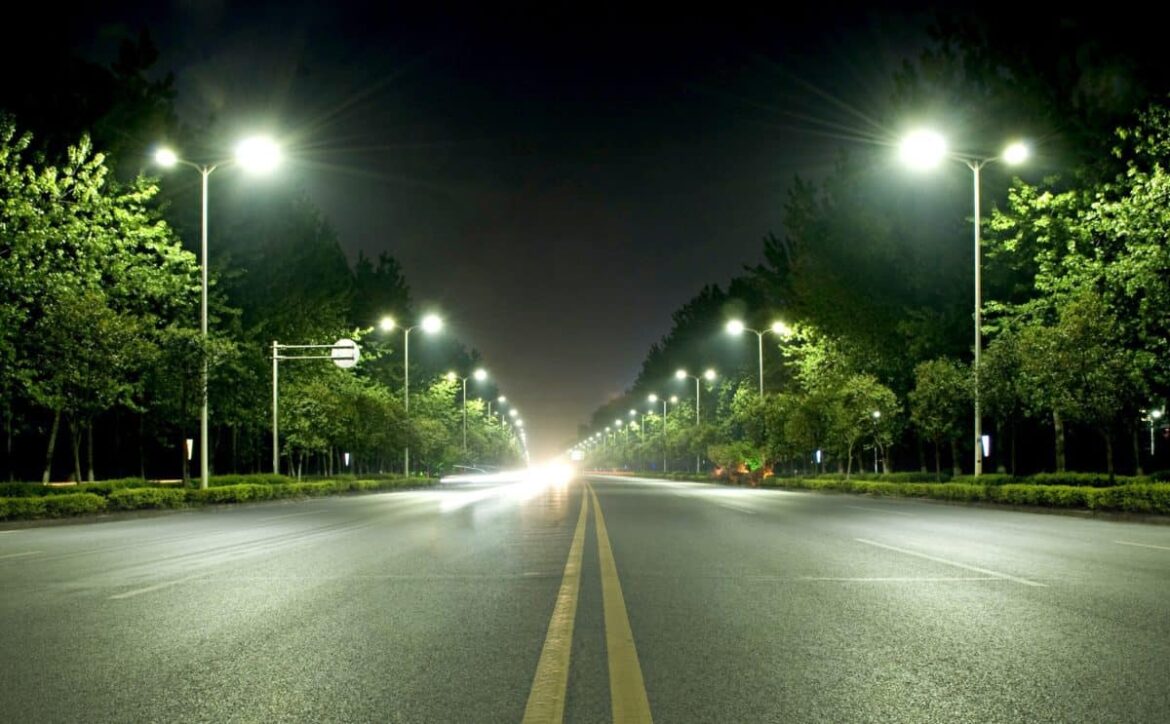As cities around the world look for ways to reduce energy costs and protect our planet, LED street lights offer a brilliant solution. Recent advances in lighting technology have made LEDs an incredibly efficient way to illuminate streets while saving money in the long run.
From reducing costs to improved safety benefits, it is no surprise that LED street lights are becoming increasingly popular across communities worldwide.
This article will explore the cost-saving advantages of LED street lights and how they can help lead us into a brighter future.
Improved Safety and Visibility: LED Street Lights Outperform Traditional Lighting Solutions
 The advantages of LED street lights compared to traditional lighting solutions are clear: they offer improved safety and visibility. LED lights are brighter, which means that drivers and cyclists can more easily see the road ahead, reducing the risk of accidents due to poor visibility.
The advantages of LED street lights compared to traditional lighting solutions are clear: they offer improved safety and visibility. LED lights are brighter, which means that drivers and cyclists can more easily see the road ahead, reducing the risk of accidents due to poor visibility.
In addition, LED lights have a longer lifetime than traditional lamps, with some lasting up to 50 times longer, ensuring that roads will be well-lit for much longer periods with fewer replacements required. The fact that these energy-efficient LEDs require less energy also means reduced power costs over time as opposed to more traditional lighting systems.
Finally, their design makes them aesthetically pleasing for residential areas or business districts alike – adding another layer of appeal in terms of improving safety and visibility on streets across all communities.
Lower Operating Costs: LEDs Reduce Maintenance and Energy Consumption
LED street lights are becoming increasingly popular as a cost-saving lighting solution for streets and other public spaces. Not only do LED lights provide brighter, more energy-efficient illumination than traditional bulbs, but they also require less maintenance and can help reduce operating costs.
The main advantage of LEDs over traditional lighting is in their lower energy consumption—they use up to 80% less electricity than conventional lightbulbs. This means that with the same amount of power used by incandescent or fluorescent bulbs, LED street lights can produce far greater amounts of light output at much lower costs.
As a bonus, this reduced energy consumption translates into lower utility bills for cities and municipalities that choose to convert from traditional bulbs to LEDs. LEDs are also incredibly durable and long-lasting—with proper care, they have been known to last up to 10 years without needing replacement or repair operations like rewiring or bulb changing which takes time and money.
This makes them ideal for areas where access may be difficult due to weather conditions or physical barriers such as trees or buildings; since fewer repairs will be required over the life cycle of these fixtures LED street lights offer significant savings in man hours throughout their lifespan compared with regular lamps which need frequent replacing.
Finally, unlike conventional lighting solutions which contain hazardous materials such as mercury vapor (which must be disposed of responsibly), LED technology does not contain any toxic substances making it an even more attractive option when considering the environmental impacts involved in its installation and operation.
In short, switching from regular lamps to LED street lights offers an effective way for cities around the world looking to save on operational expenses while still providing bright quality illumination outdoors – all while having a minimal impact on our environment!

Source: www.bostonglobe.com
Environmental Benefits of LEDs: Reduced Carbon Footprint and Long-Term Cost Savings
LED street lights offer several advantages that make them the preferred choice for many cities around the world. As energy-efficient alternatives to traditional lighting, LED street lights have numerous environmental benefits, including reduced carbon footprints and long-term cost savings.
The switch to LED lighting has led to a reduction in carbon emissions due to their superior energy efficiency when compared with traditional street lighting options. LEDs require less power than other types of light sources, resulting in lower electricity consumption and associated greenhouse gas emissions.
Additionally, LED street lights last significantly longer than conventional lamps – meaning fewer lamps need replacing over time which further reduces the amount of waste generated from discarded bulbs or ballasts. In addition to these environmental benefits, there are also significant cost savings associated with using LED technology for illuminating streets at night.
The initial investment may be more expensive but it is quickly offset by reductions in energy bills as LEDs use up to 75% less electricity when compared with standard incandescent bulbs or halogen spotlights and can last between 50 000 – 100 000 hours – several times longer than other forms of lighting such as sodium vapor or metal halide lamps that only last 10 000 hours on average.
This means municipalities don’t have to invest money into replacing burned-out bulbs as often which saves both time and money over the long term.
Overall, switching city streets from traditional lights like high-pressure sodium (HPS) or mercury vapor (MV) lamp systems to LED technology provides an array of environmental benefits while also offering considerable economic advantages through long-term cost savings. With improved visibility on city streets combined with low maintenance requirements, LEDs are becoming an increasingly popular choice among cities looking for ways to reduce their impact on the environment while controlling rising costs related to municipal infrastructure improvements.

Source: provprocure.com
Conclusion
LED street lighting is becoming increasingly popular due to its cost-saving advantages. LED lights are efficient and long-lasting, lasting up to 50 times longer than traditional bulbs while consuming significantly less energy.
This means fewer light replacements, reduced maintenance costs, lower electricity bills for cities and businesses, as well as improved public safety and overall convenience. The benefits of LED street lighting far outweigh their initial cost investment, making them a great way to save money over time while still providing the necessary illumination along city streets or in commercial areas.

